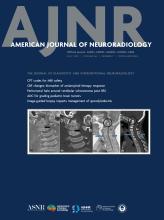Case of the Month
Section Editor: Nicholas Stence, MD
Children's Hospital Colorado, Aurora, CO
August 2022
Next Case of the Month Coming September 6...
Moyamoya Disease
- Background:
- Rare idiopathic progressive vasculopathy characterized by stenosis and occlusion of cerebral arteries, mostly terminal portions of the bilateral internal carotid arteries and their proximal branches, which results in the formation of collateral vessels
- Bimodal age peaks: 5–10 years and fourth decade
- Clinical Presentation:
- Children: Recurrent transient ischemic attacks; hemorrhage is rare
- Adults: Transient ischemic attacks, infarcts, hemorrhage, migraines
- Key Diagnostic Features:
- T2-FLAIR: Linear hyperintensity along the cerebral sulci (“ivy sign") – caused by slow retrograde flow of engorged pial arteries via leptomeningeal anastomosis
- CT/MRI postcontrast: Multiple lenticulostriate collaterals and netlike thin vessels in cisterns
- Digital subtraction angiography: Characteristic “puff of smoke” appearance
- Perfusion CT/MRI: Useful in evaluation of cerebral hemodynamic status
- Differential Diagnoses:
- Cranial radiotherapy
- Atherosclerosis
- Neurofibromatosis type 1
- Cerebral vasculitis
- Treatment
- Antithrombotic drugs – to prevent the recurrence of stroke and are associated with reduced mortality
- Surgical revascularization
- Indirect bypass: Encephalo-duro-arterio-synangiosis; more effective in children
- Direct bypass: Superficial temporal artery-middle cerebral artery; more common in adults











